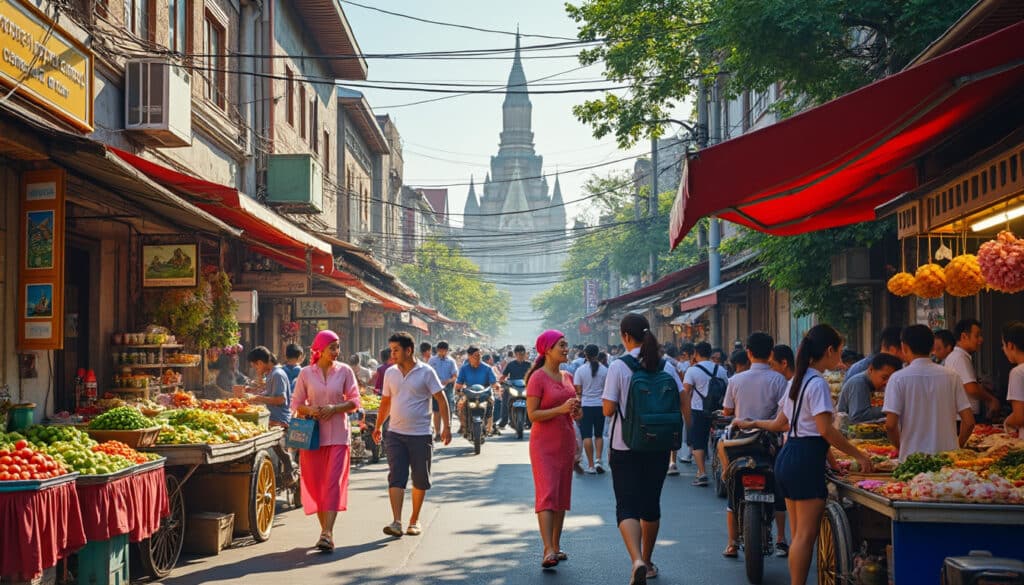Bangkok, a city that pulsates with life and color, is a mesmerizing tapestry woven with threads of tradition and threads of modernity. The juxtaposition of its ancient temples against sleek skyscrapers reflects its unique architectural identity. As Thailand’s vibrant capital, Bangkok has evolved dramatically since it became the capital of Siam in 1782. Today, it stands as a living canvas showcasing an architectural evolution that bridges the historical with the contemporary. From its humble beginnings as a city navigated by canals to its current status as a bustling metropolis, Bangkok’s architecture is a testament to its resilience and adaptability. Whether exploring its opulent palaces or towering high-rises, visitors can unravel tales of a city in constant transformation.
The Historical Roots of Bangkok’s Urban Design
At its core, Bangkok’s urban framework is a convergence of water-based transport systems and rigid land-planned structures. In the late 18th century, under King Rama I, the city embraced its strategic location along the protective arc of the Chao Phraya River and the vast sea of mud to the east. This configuration provided both security and sustainable growth, modeled after the ancient city of Ayutthaya. Ayutthaya served as a foundational influence, an urban archetype upon which Bangkok expanded its dominion.
The city’s initial development was characterized by a network of canals and floating houses. These were essential lifelines for trade and transport, anchoring Bangkok as a pivotal economic hub. As urban demands grew, these canals became arteries of commerce, even as they set the stage for urban shifts. Temples, libraries, and educational institutions began to sprout, marking Bangkok’s rise as a cultural beacon.
However, as modernity beckoned, these waterborne pathways gave way to roads and pavements. The 20th century saw the emergence of public parks, universities, and organized public transport, transforming the urban landscape significantly. The swift development pace during this era wasn’t without missteps; some architectural endeavors stirred debates – the Robot and Elephant buildings being prime examples. Yet, through these developments, the city continued to thrive, resiliently nurturing its nik for innovation.
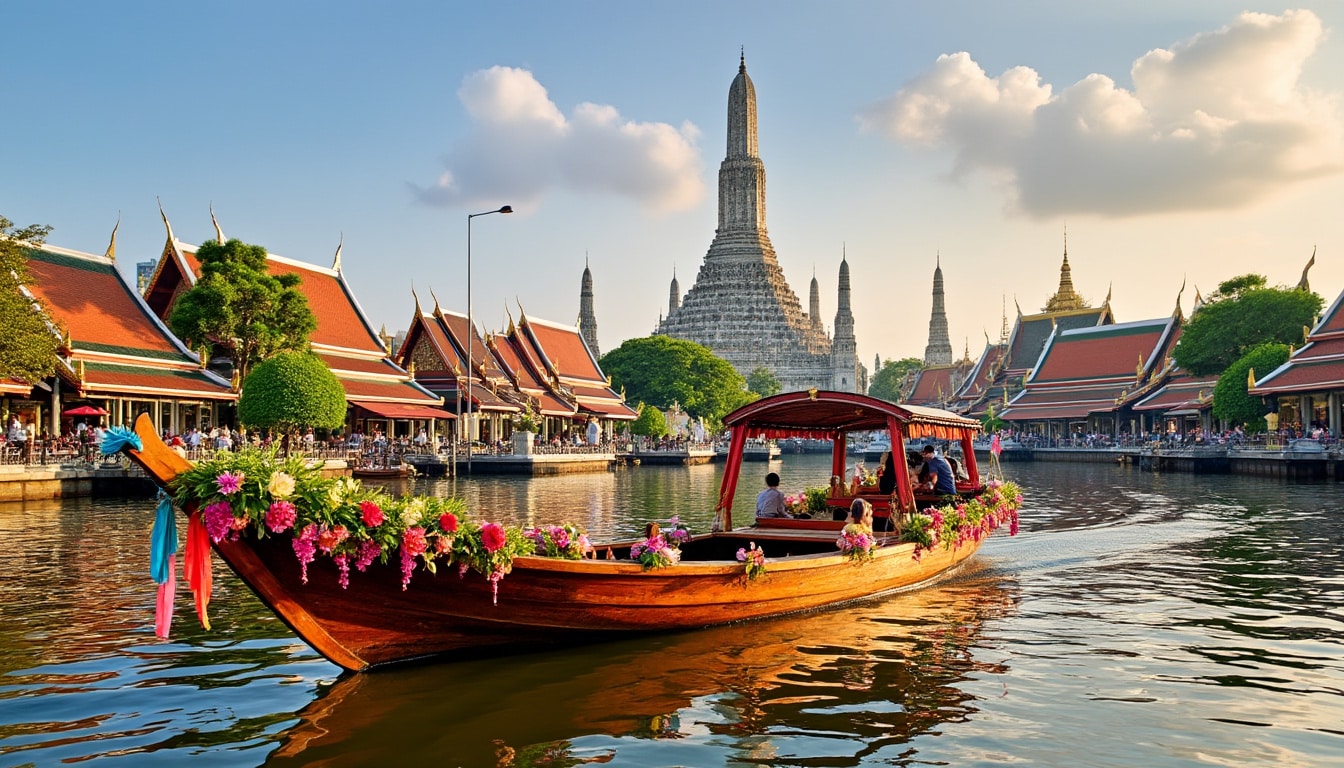
Bangkok’s Temples: Pillars of Tradition Amidst Modernity
The cityscape of Bangkok is adorned with majestic temples, or wats, that command respect and reverence. These sacred structures are architectural masterpieces, grounded in religious significance yet instantly recognizable by their intricate designs and color palettes. For centuries, temples have been the cultural and spiritual bedrock of Thai society, embodying the quintessence of Thai architecture.
Wat Arun, the “Temple of Dawn,” stands as a porcelain-adorned beacon along the riverbanks, its symmetry and detailing reflecting the opulent style of the early Rattanakosin period. Wat Phra Kaew, within the Grand Palace complex, is a treasure trove of mural art, gilded structures, and mythological sculptures that narrate stories dating back to the establishment of Siamese identity.
- ✨ Wat Pho: Home to the reclining Buddha, showcasing traditional Thai massage.
- ✨ Wat Suthat: Known for its towering red Giant Swing and intricate murals.
- ✨ Wat Saket: Its Golden Mount offers panoramic views of the city’s sprawl.
Despite modernization, these temples continue to share Bangkok’s skyline with modern marvels, like the MahaNakhon tower, their towering presence ensuring that spirituality and tradition maintain their rightful place amidst the city’s evolution.
Modern Architectural Wonders of Bangkok
The contemporary skyline of Bangkok is a testament to its embracing of global architectural trends while integrating them within local contexts. The city wears its modern pedigree with pride, showcased in a repertoire of avant-garde structures with diverse purposes, from commercial spaces to cultural landmarks.
Architectural gems like the Central Embassy showcase asymmetrical designs combined with luxury retail facilities, demonstrating what the fusion between modern retail spaces and hospitality can offer. The BU Landmark Complex pays homage to its environment by mirroring the university’s diamond symbol while addressing urban challenges it faced. Each building is a puzzle piece in Bangkok’s architectural identity puzzle, narrating stories of innovation and integration.
- 🏢 King Power MahaNakhon: Known for its pixelated façade, offering panoramic city views.
- 🏢 Glasshouse at Sindhorn: Fuses dining and nature in an urban setting.
- 🏢 The Met: An example of vertical green living, blending sustainability with luxury.
Furthermore, with sustainability increasingly taking center stage, buildings like the Bangkok Tree House are leading the way by incorporating eco-friendly materials, highlighting the synergy between architecture and green design principles. Bangkok Metropolis’ skyline is undoubtedly a reflection of its journey from tradition to modern innovation.
The Role of Thai Urban Planning and Sustainable Initiatives
Modern urban planning in Bangkok has become pivotal in accommodating growth while addressing environmental concerns. With the guidance of bodies such as the Bangkok Architecture Association and Siam Architects, the city continuously strives to strike a balance between development and sustainability. Thai Landscape Architects also play a key role in preserving the city’s natural beauty.
Sustainable initiatives have focused on creating ‘green lungs’ within the metropolis, such as the Bang Krachao area, often referred to as Bangkok’s green lung. These initiatives are crucial in offsetting the effects of rapid urbanization that, while economically beneficial, poses environmental challenges.
| 🌱 Sustainability Feature | 🏢 Example |
|---|---|
| Roof Gardens | The EmQuartier’s open-air rooftop garden. |
| Vertical Gardens | Rosewood Bangkok’s lush atrium. |
| Green Building Materials | Bangkok Tree House’s use of local, recycled wood. |
Bangkok’s commitment to sustainability ensures that this sprawling metropolis remains livable, with spaces that enhance air quality and provide respite from the urban hustle, epitomizing the vision of Thai Urban Planning for a greener future.
Interactive Spaces and Cultural Landmarks in Bangkok
Bangkok thrives not only on its architectural prowess but also on its ability to integrate culture seamlessly within its urban fabric. The Bangkok Art and Culture Centre is a defining example, serving as a communal hub that fuses art with social interaction. These spaces elevate Bangkok beyond just a city of sights, transforming it into a city of experiences.
Restaurants and cafes like Storyline Cafe or Kaizen Coffee Co. are more than just places to grab a bite; they offer spaces for creativity and community. With an increasing emphasis on interactive spaces, Bangkok’s urban soul redefines what it means to engage culturally.
- 🎨 Thailand Creative and Design Center: A catalyst for innovation, fostering creative ideas.
- 🎭 Naiipa Art Complex: Merging art with nature, concealed within a forest landscape.
- 🎶 Hard Rock Cafe Facade: Where music and architecture harmonize beautifully.
Through various initiatives, from vibrant art exhibits to culturally immersive cafes, Bangkok is constantly renewing its identity as a hub of cultural vitality, where every space tells a story, invites interaction, and celebrates diversity.
Influence of Bangkok’s Climate on Urban Features
The tropical climate of Bangkok further shapes its urban features, influencing everything from architectural brightness to building materials chosen. The long sunlit days and frequent rains require thoughtful consideration in design, ensuring that structures can withstand both the humidity and bustling city’s demands.
Local materials are preferred due to their affordability and climate resilience, a tradition extending back centuries as seen in Thai Baan Design Group’s approach and practice. The coming months offer travelers an ever-evolving urban landscape, intricately planned and executed to offer an authentic Bangkok experience.
| 🌡️ Month | ☀️ Weather Feature |
|---|---|
| January | Cool Breeze, Pleasant Evenings |
| April | Hot and Humid, Pre-Monsoon Heat |
| September | Frequent Showers, Greenery Flourishing |
The expertise of the Bangkok City Planning department ensures that each construction takes the climate into account, creating structures that are as functional as they are beautiful, further contributing to the city’s arresting charm.
Crafting Bangkok’s Future: Urban Design in 2025
As we navigate the intricacies of urban life in Bangkok, one thing remains clear: the city’s future lies in its ability to adapt and innovate. By 2025, Bangkok’s architectural journey is one of embracing integration, sustainability, and cultural harmony. Each new project is not merely an addition to its skyline but a reimagining of what it means to live in one of Southeast Asia’s most dynamic cities.
Projects like the ongoing expansion of the Suvarnabhumi Airport offer glimpses into the scale and ambition of Siam Architects leading urban innovation. The Bangkok Architecture Association remains committed to forwarding the integration of technology and renewable energy into its design ethos.
- 🚀 Technology-Inspired Designs: Increasing smart buildings incorporating IoT and AI features.
- 🌍 Sustainable Communities: Emphasis on eco-friendly neighborhoods.
- 🏗️ Cultural Conservation: Projects preserving Bangkok’s rich heritage amidst modernization.
Bangkok stands at the crossroads of tradition and progress, vested in crafting a story that speaks to both its rich past and its promising future, driven by the passion and creativity of those who dare to dream it anew.
Bangkok as a Model for Urban Innovation in Southeast Asia
The aspirations of Bangkok extend beyond its borders. As it leans into its 21st-century vision, it presents a case study for urban innovation throughout Southeast Asia. The city’s approach to integrating historical richness with cutting-edge design and sustainable initiatives serves as a guiding light.
Bangkok’s journey is characterized by a commitment to progressive policies, citywide collaborations among developers, policymakers, and the public, fostering a shared vision for urban sanctuaries where culture, commerce, and community interplay.
This narrative is one that encourages other cities to embrace adaptation and inclusivity in their urban blueprints, reflecting the diversity of urban life in their architectural expression.
FAQ on Bangkok’s Architecture and Urban Features
Here are some frequently asked questions to enhance your understanding of Bangkok’s architectural landscape:
- How has Bangkok’s architecture evolved over the centuries?
Bangkok’s architecture has transitioned from traditional floating houses and temples to contemporary high-rises, reflecting its growth and modernization. - What role does the Chao Phraya River play in urban planning?
This river was central to ancient Bangkok’s transport and trade routes, shaping its current infrastructural and urban planning initiatives. - Are there sustainable architecture projects in Bangkok?
Yes, numerous projects like the Bangkok Tree House embrace sustainability, using eco-friendly materials and integrating green spaces. - How does Bangkok accommodate its tropical climate in its architectural designs?
Designs often utilize local materials suited to tropical conditions and implement features like ventilation and roof gardens to handle humidity and heat. - What makes Bangkok unique in Southeast Asian urban planning?
Its blend of contemporary design with rich historical elements, alongside innovative sustainability practices, distinguishes it from other cities.
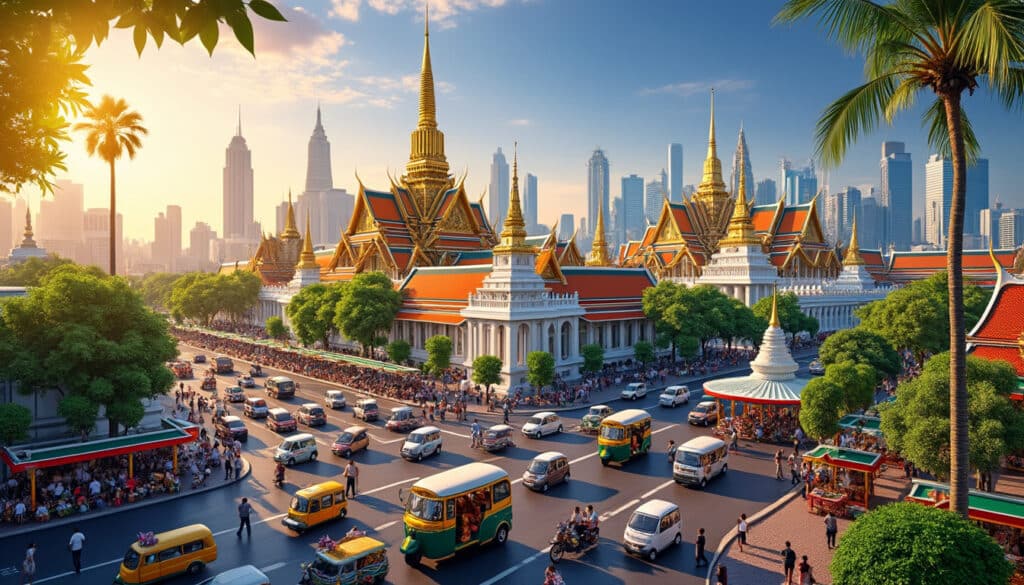
Fun Facts & Curiosities About Bangkok
Bangkok, a vibrant blend of ancient traditions and modern marvels, captivates visitors with its endless energy. As Thailand’s bustling capital, the city offers a fascinating array of contrasts from its traditional temples to towering skyscrapers. It’s no wonder that Bangkok…
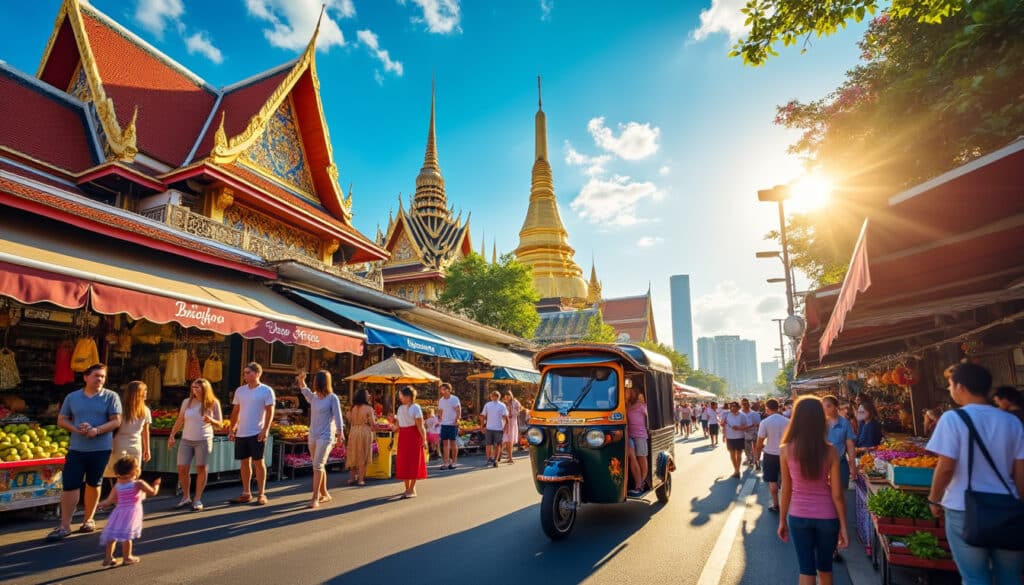
Bangkok, Thailand’s vibrant capital, stands as a striking blend of historical significance and modern dynamism. With its origins dating back to 1782 when King Rama I founded the city, Bangkok has evolved into a bustling center of culture and commerce.…
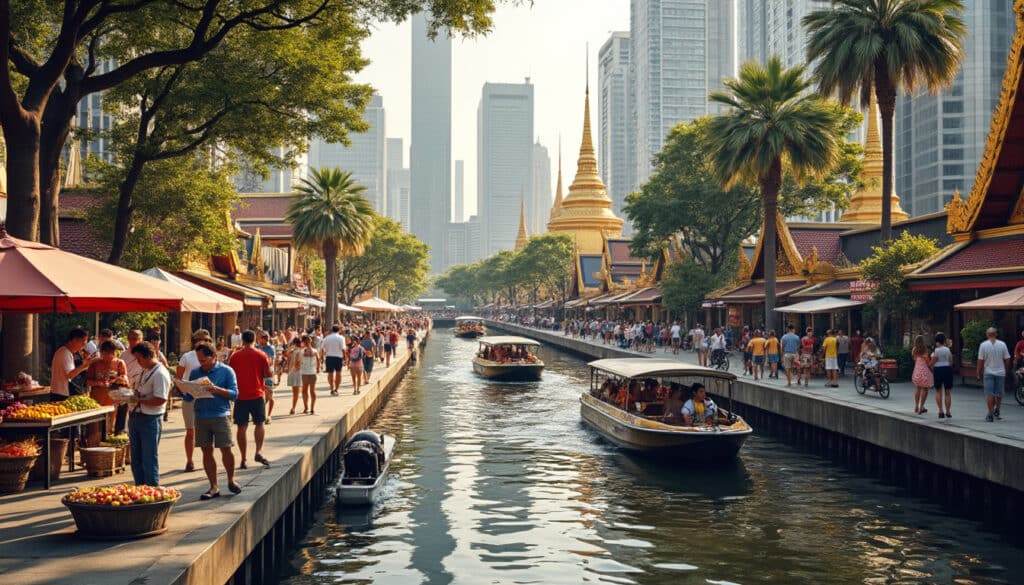
Demographics and geography of Bangkok
Bangkok, a city known for its vibrant street life, timeless culture, and dynamic urban environment, extends beyond just being Thailand’s capital. This bustling metropolis is characterized by its unique demographic composition and geographical footprint, weaving a complex tapestry that encapsulates…
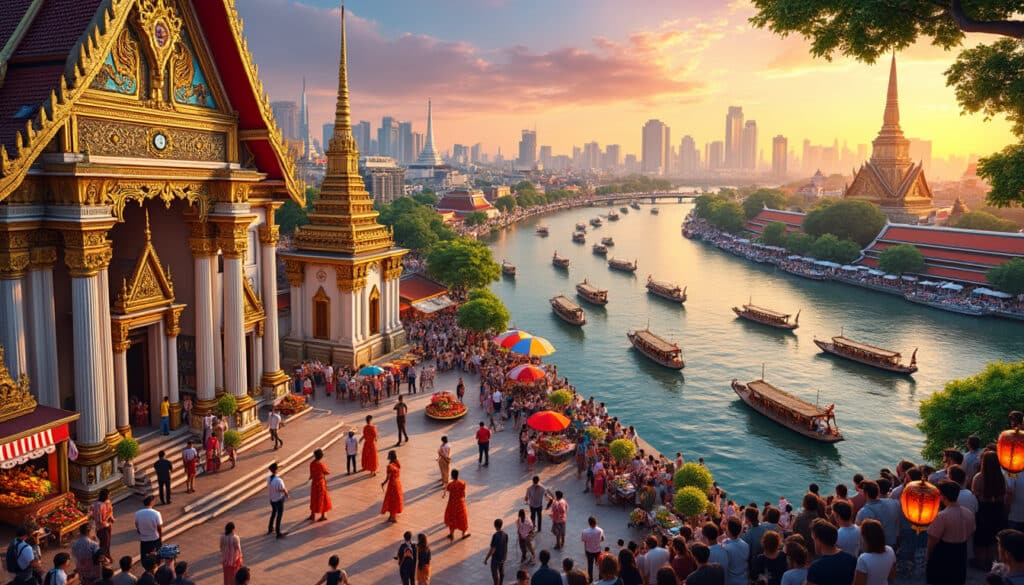
Welcome to the bustling heart of Thailand, where history meets modernity in a vibrant tapestry of culture, tradition, and innovation. Bangkok, known for its iconic landmarks and rich cultural heritage, is more than just a gateway to paradise—it is a…
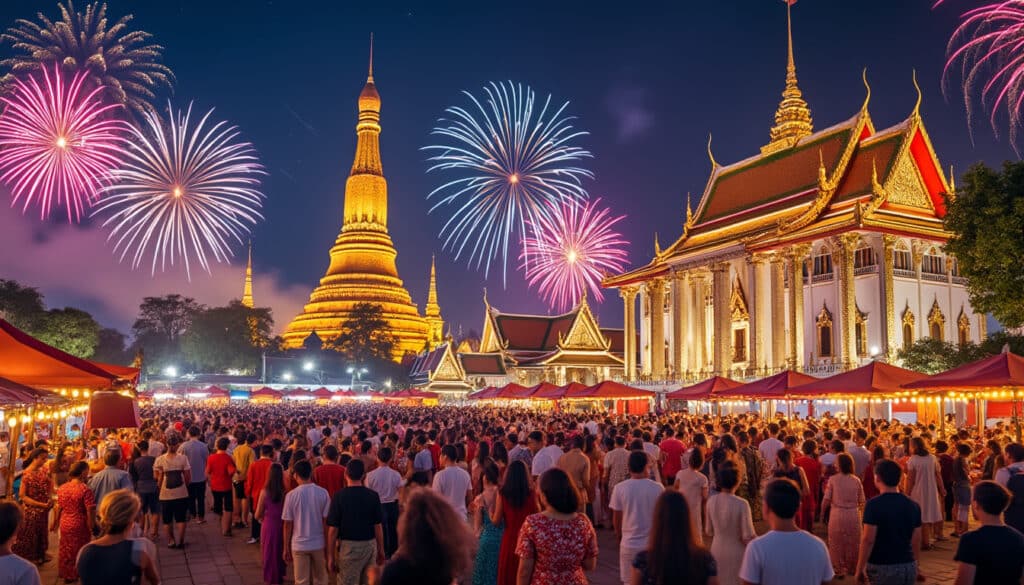
Holidays and celebrations in Bangkok
Bangkok, the vibrant capital of Thailand, is a city that never sleeps and a hub of festivities throughout the year. Whether it’s a traditional Thai festival or an international celebration, Bangkok is the place where locals and tourists come together…
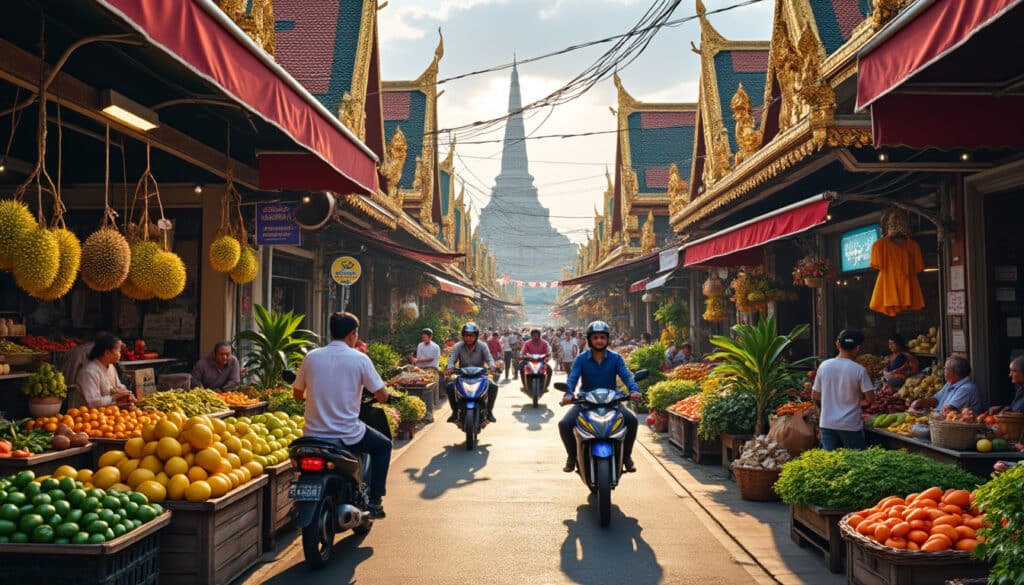
Language and spelling of Bangkok
The enchanting city of Bangkok, Thailand’s vibrant capital, harbors a captivating tapestry of languages. With its rich historical veins and bustling modern-day activities, the languages spoken in Bangkok reflect not only its local heritage but also its position as a…
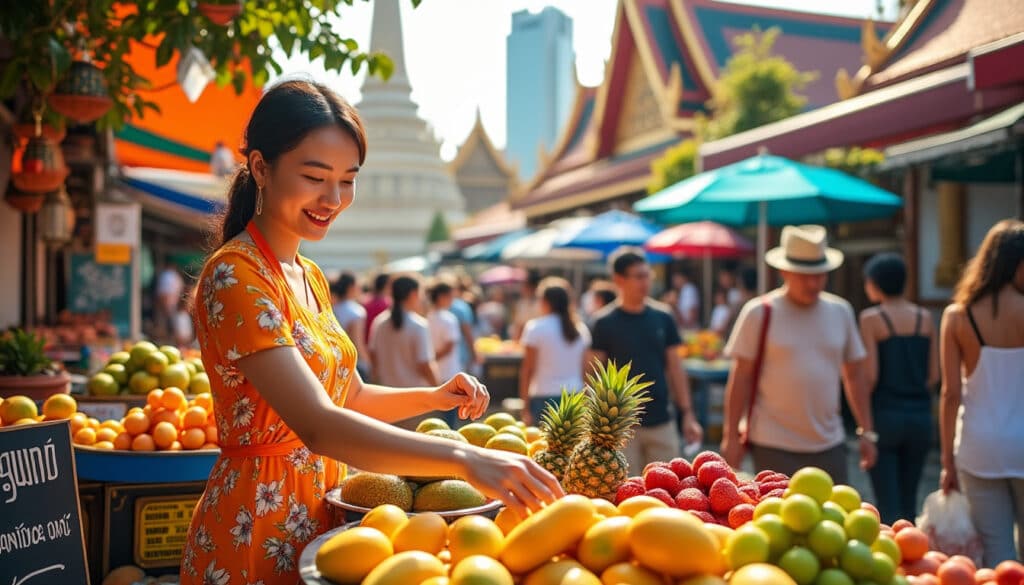
Local tips for tourists in Bangkok
Bangkok is a city rich in history, culture, and vibrant life, making it a must-visit destination for travelers seeking an unforgettable experience. Stepping beyond the well-trodden tourist paths, visitors can uncover hidden gems that offer a deeper understanding of local…
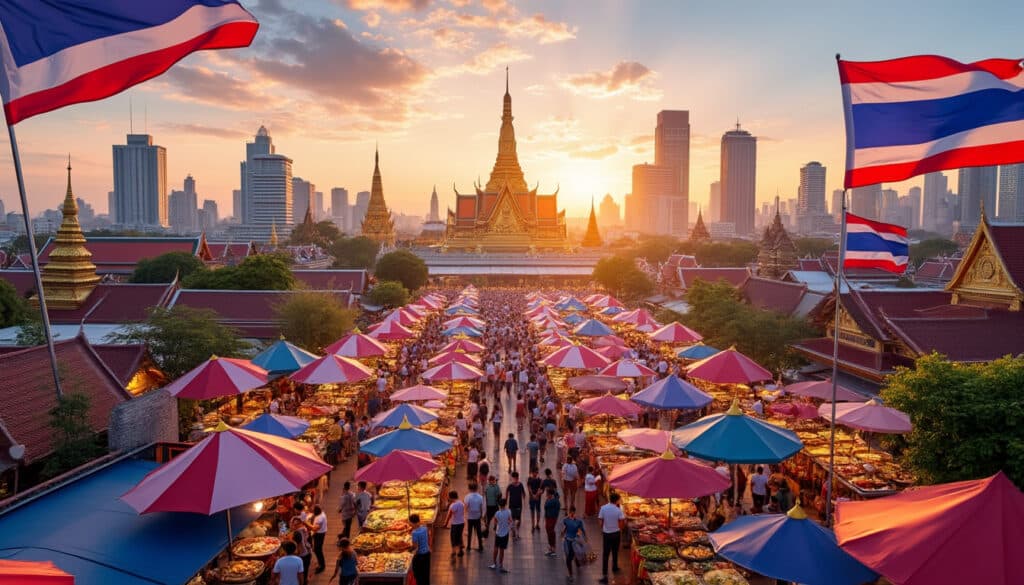
Names, flags, and identity of Bangkok
Bangkok, a city that pulsates with a mix of ancient traditions and modern dynamics, is more than just Thailand’s bustling capital. It’s a city with a rich tapestry of names, identities, and symbols that reflect its history and cultural depth.…
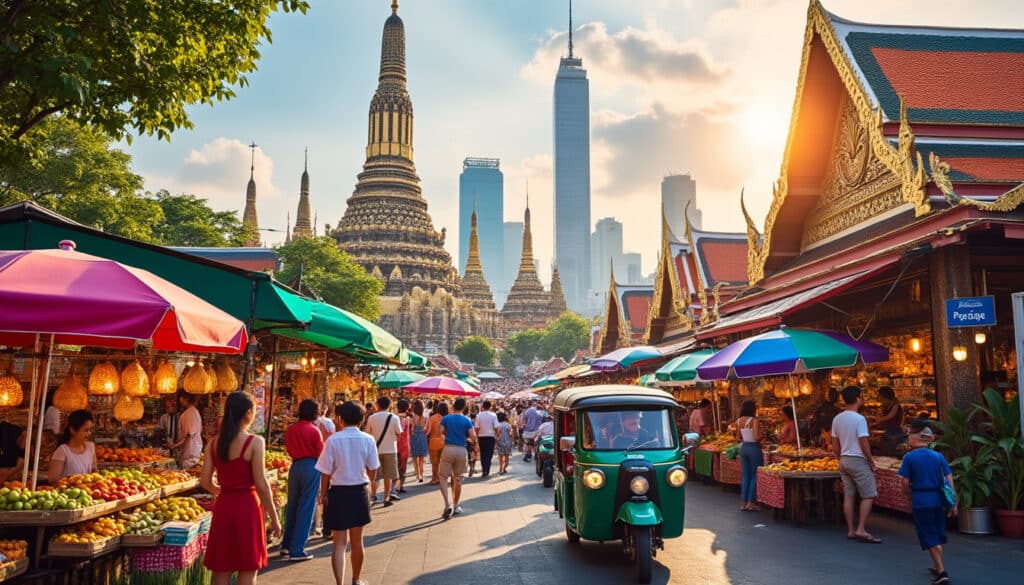
Reputation and identity of Bangkok
Bangkok, a city that pulses with life and energy, captivates the world with its unique blend of tradition and modernity. Its reputation as a vibrant and chaotic metropolis is matched only by its rich cultural heritage and flourishing tourism industry.…
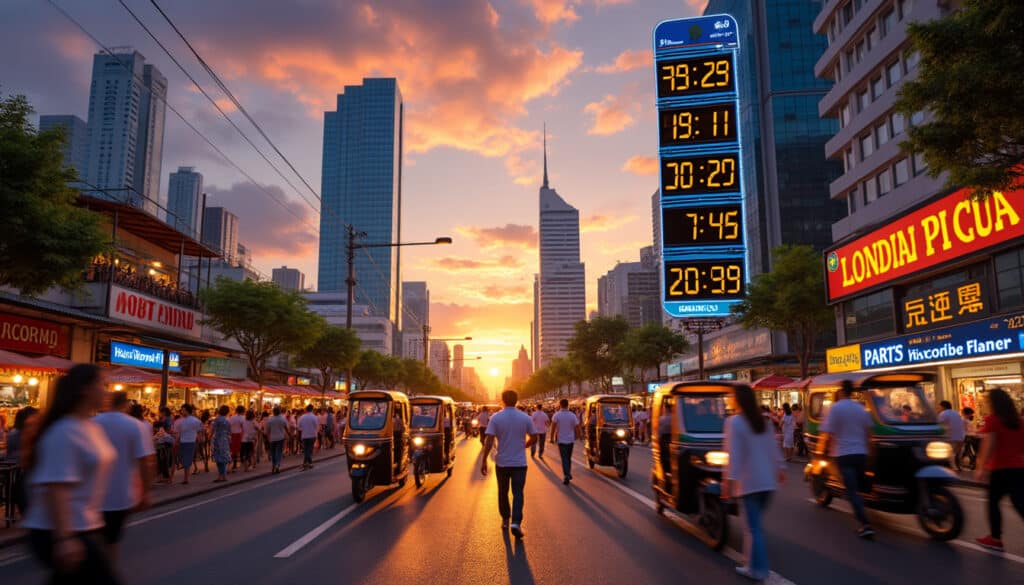
Understanding Bangkok’s time zone is crucial for travelers and residents alike, whether planning a journey or just coordinating with people across the globe. The local time, known as *Bangkok Time*, is part of the GMT+7 zone, highlighting its placement in…
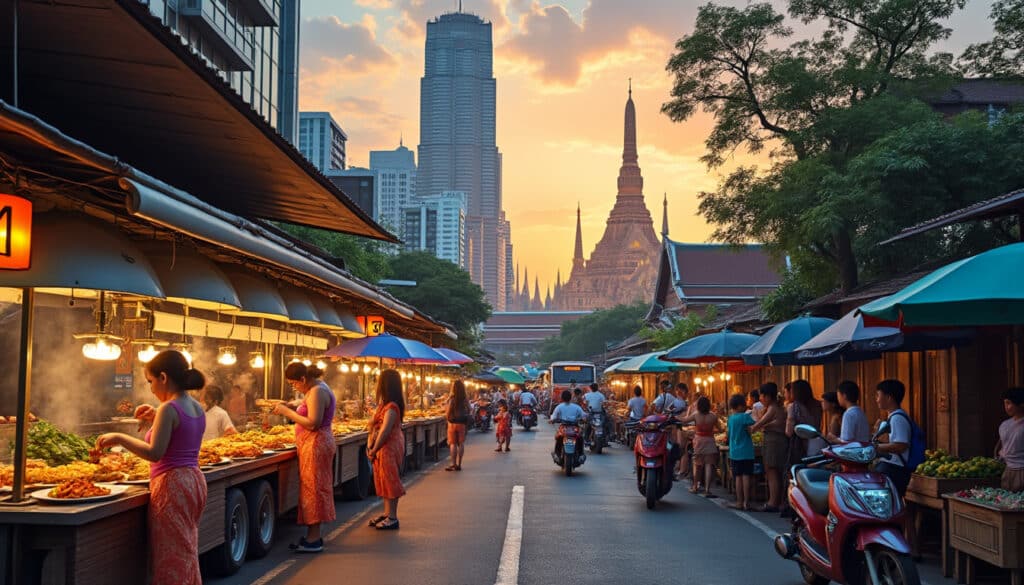
Unusual facts and social issues in Bangkok
Bangkok, known for its vibrant life and cultural richness, is a city of fascinating contrasts. While the shimmering temples and bustling streets capture the attention of travelers, there’s an intriguing side to the Thai capital that many may not immediately…

What does Bangkok look, smell, feel like?
Bangkok, a bustling metropolis at the heart of Thailand, is alive with an intriguing blend of sights, sounds, smells, and experiences that captivate every visitor. Known for its majestic Buddhist temples, vibrant street food scenes, and the ever-chaotic Chao Phraya…


